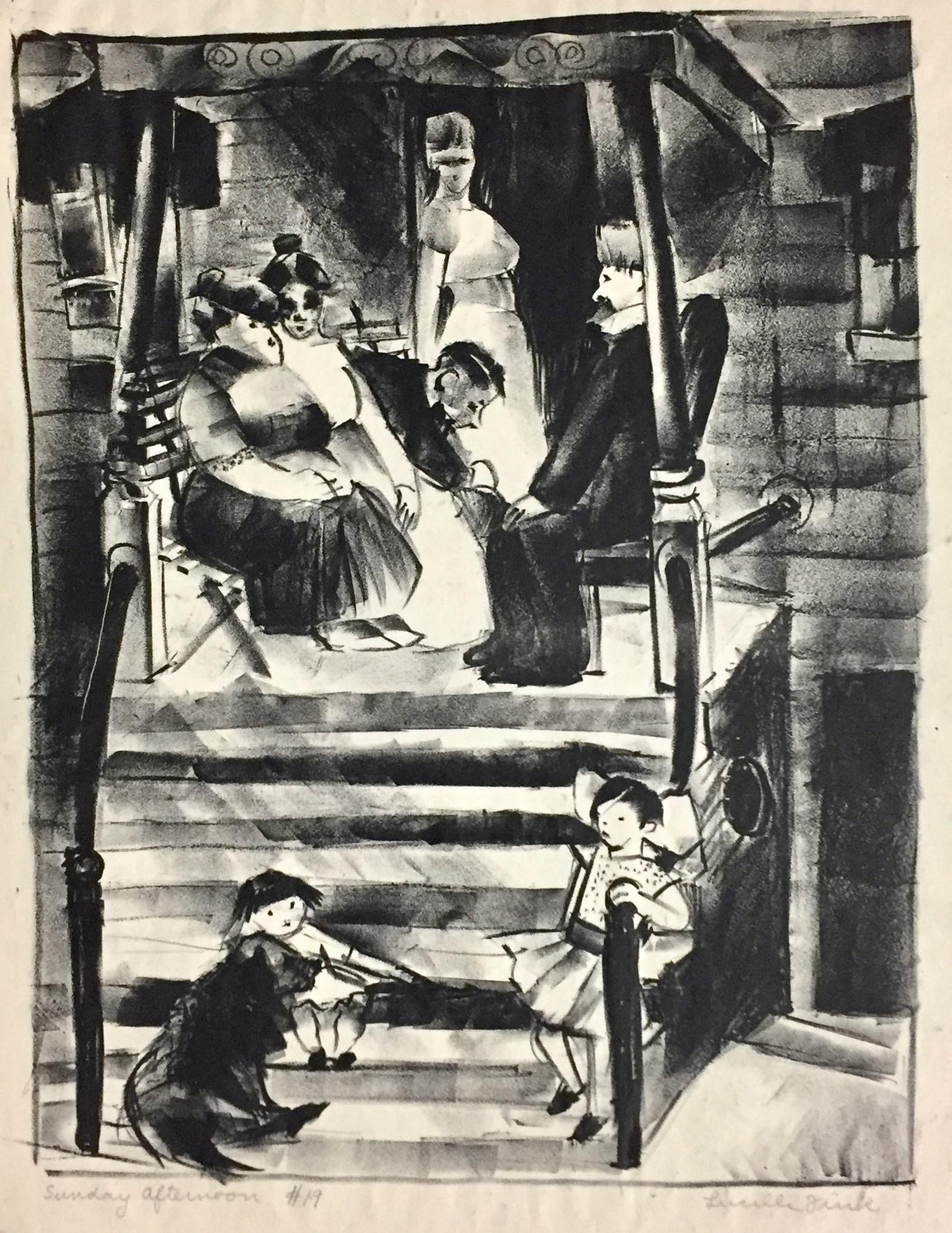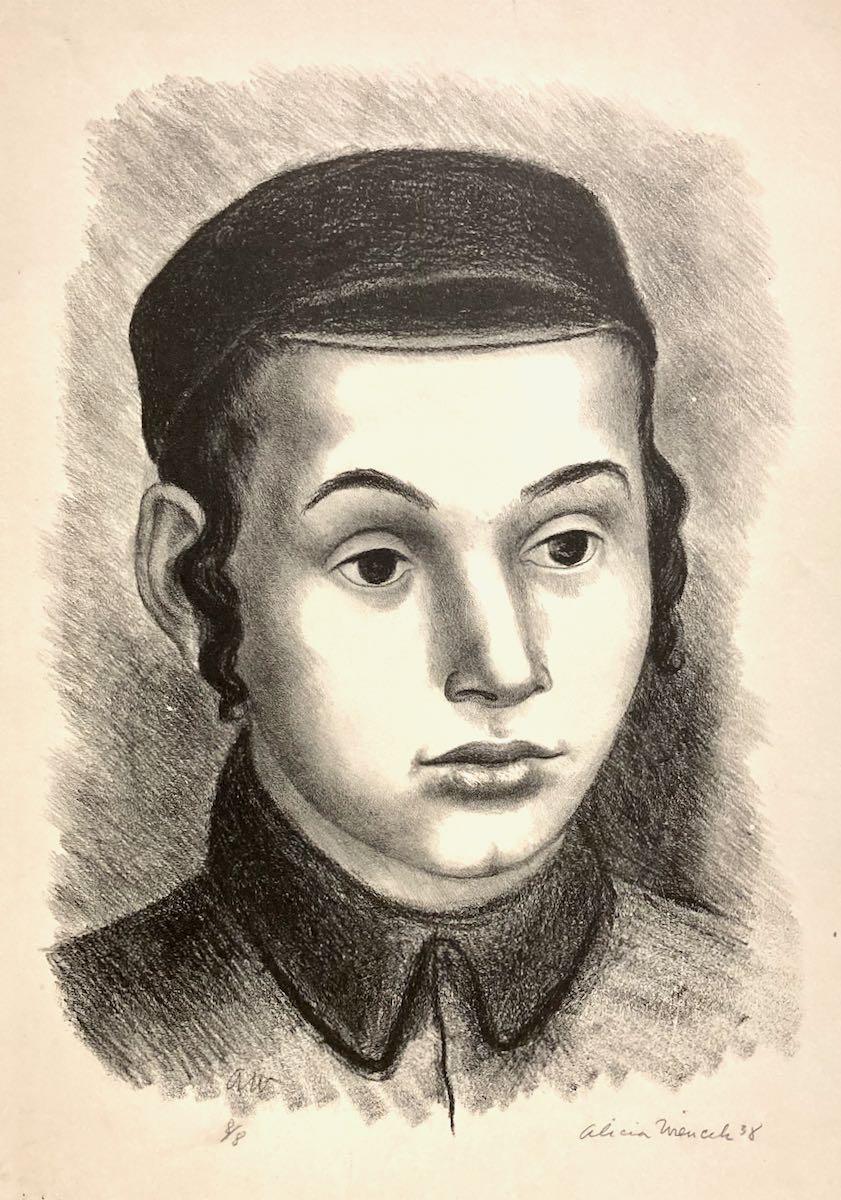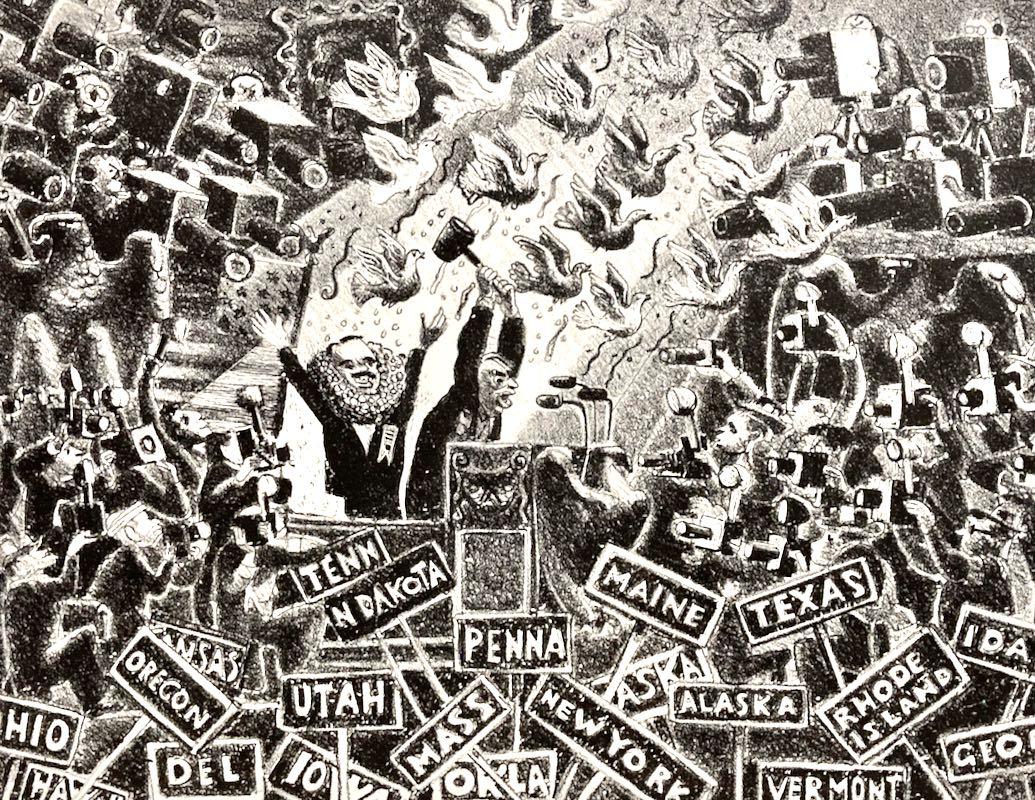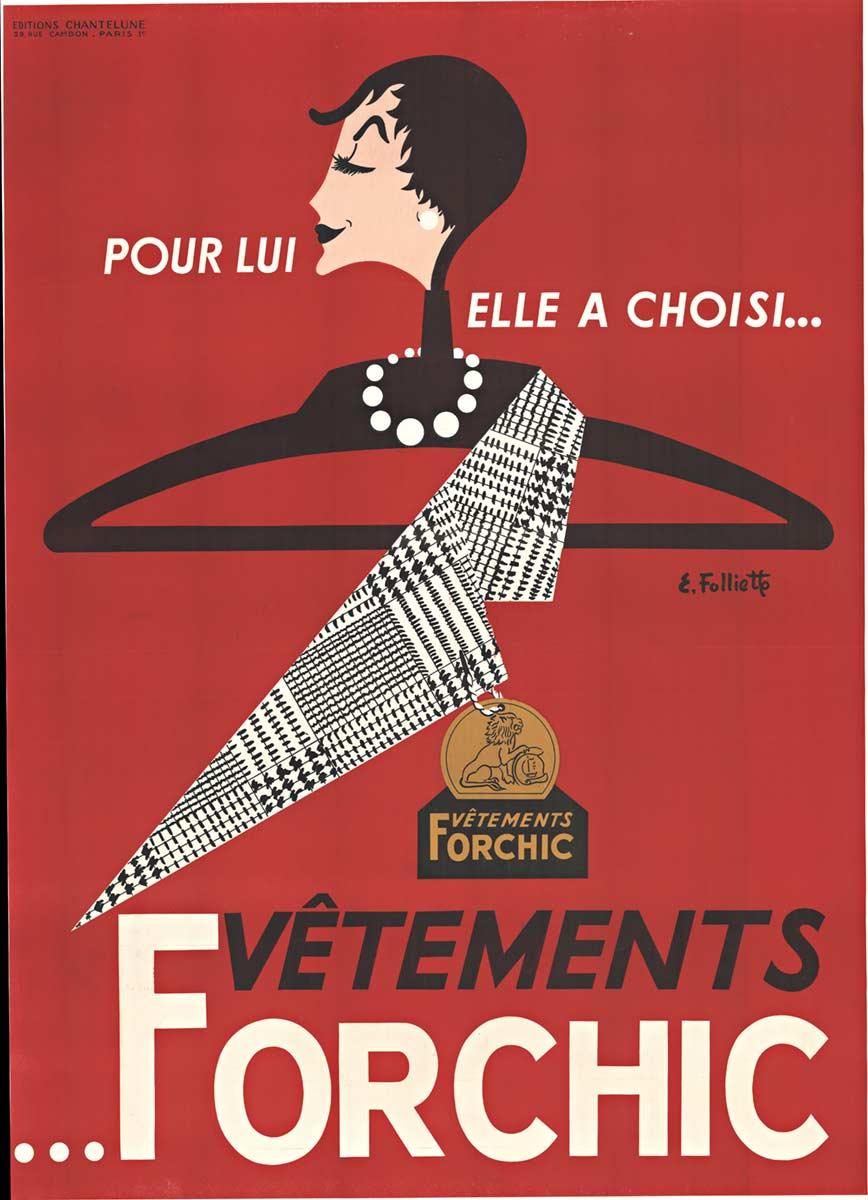Items Similar to Large George Grosz 1923 Lithograph Die Rauber German Expressionism WPA Realism
Want more images or videos?
Request additional images or videos from the seller
1 of 20
George GroszLarge George Grosz 1923 Lithograph Die Rauber German Expressionism WPA Realism 1922-1923
1922-1923
About the Item
From The robbers. lithographs by George Grosz for the drama of the same name.
photolithography on watermarked paper. 19 X 25.5 inches (sheet size). This is not hand signed or numbered in pecil.
Limited edition. Berlin, Malik-Verlag, 1923.
Dückers MV, 1-9
This listing is just for the one lithograph, the folio cover photos are just included for provenance and is not included in this sale.
The portfolio is based on pen and ink drawings that were transferred using photolithography for printing. Schiller's "Räuber" served as a template, which Grosz transferred to his time and updated with drawings. With sharp polemics, he brings together the types of society and draws attention to social grievances: Financial disparity, robber barons with piles of money etc. according to the military chaplain, who blesses the disaster of war that has already happened; the well-fed manufacturers who gamble in the presence of the unemployed for the money they lack; or the hollow-faced creature begging a bounty from the richly set table of the bronze.
Expressionismus Grosz, George
Die Räuber: Neun Lithographien zu Sentenzen aus Schillers Räuber. Lithographien von George Grosz. Berlin, Der Malik-Verlag, 1922.
George Grosz (July 26, 1893 – July 6, 1959) was a German artist known especially for his Satire and Caricature drawings of Berlin life in the 1920s. He was a prominent member of the Berlin Dada and New Objectivity group during the Weimar Republic before he emigrated to the United States in 1933. He studied at the Dresden Academy of Fine Arts, where his teachers were Richard Müller, Robert Sterl, and Oskar Schindler. He subsequently studied at the Berlin College of Arts and Crafts under Emil Orlik. Grosz left the Communist Party KPD in 1922 after having spent five months in Russia and meeting Lenin and Trotsky, because of his antagonism to any form of dictatorial authority. Along with Otto Dix, he is widely considered one of the most important artists of the Neue Sachlichkeit.
Bitterly anti Nazi, Grosz left Germany shortly before Hitler came to power. In June 1932, he accepted an invitation to teach the summer semester at the Art Students League of New York. In October 1932, Grosz returned to Germany, but on January 12, 1933 he and his family emigrated to America.
In 1946 he published his autobiography, A Little Yes and a Big No. In the 1950s he opened a private art school at his home and also worked as Artist in Residence at the Des Moines Art Center. Grosz was elected into the National Academy of Design as an Associate Academician in 1950. In 1954 he was elected to the American Academy of Arts and Letters.
Grosz worked in a style influenced by Expressionism and Futurism, as well as by popular illustration, graffiti, and children's drawings.The City (1916–17) was the first of his many paintings of the modern urban scene. Other examples include the apocalyptic Explosion (1917), Metropolis (1917), and The Funeral, a 1918 painting depicting a mad funeral procession.
In his drawings, usually in pen and ink which he sometimes developed further with watercolor, Grosz did much to create the image most have of Berlin and the Weimar Republic in the 1920s. Corpulent businessmen, wounded soldiers, prostitutes, sex crimes and orgies were his great subjects His draftsmanship was excellent although the works for which he is best known adopt a deliberately crude form of caricature. His oeuvre includes a few absurdist works, and also includes a number of erotic artworks. ("Ecce Homo" which saw him accused of pornography)
My Drawings expressed my despair, hate and disillusionment, I drew drunkards; puking men; men with clenched fists cursing at the moon. ... I drew a man, face filled with fright, washing blood from his hands ... I drew lonely little men fleeing madly through empty streets. I drew a cross-section of tenement house: through one window could be seen a man attacking his wife; through another, two people making love; from a third hung a suicide with body covered by swarming flies. I drew soldiers without noses; war cripples with crustacean-like steel arms; two medical soldiers putting a violent infantryman into a strait-jacket made of a horse blanket ... I drew a skeleton dressed as a recruit being examined for military duty. I also wrote poetry. —Grosz In 1940 the Museum of Modern Art in New York shows a retrospective of his work which later tours through the United States. In 1946, the AAA Gallery, New York hosts an exhibition titled A Piece of My World in a World without Peace. Later the Dallas Museum of Arts shows several works by Grosz titled Impressions of Dallas and also the Whitney Museum, New York shows retrospective works.
George Grosz's art influenced other New Objectivity artists such as Heinrich Maria Davringhausen, Anton Räderscheidt, and Georg Scholz. In the United States, the artists influenced by his work included the social realists Ben Shahn and William Gropper.
- Creator:George Grosz (1891-1969, German)
- Creation Year:1922-1923
- Dimensions:Height: 25.5 in (64.77 cm)Width: 19 in (48.26 cm)
- Medium:
- Movement & Style:
- Period:
- Condition:good, minor wear. please see photos.
- Gallery Location:Surfside, FL
- Reference Number:1stDibs: LU38212492092
About the Seller
4.9
Platinum Seller
These expertly vetted sellers are 1stDibs' most experienced sellers and are rated highest by our customers.
Established in 1995
1stDibs seller since 2014
1,548 sales on 1stDibs
Typical response time: 1 hour
- ShippingRetrieving quote...Ships From: Surfside, FL
- Return PolicyA return for this item may be initiated within 3 days of delivery.
More From This SellerView All
- Large George Grosz 1923 Lithograph Die Rauber German Expressionism WPA RealismBy George GroszLocated in Surfside, FLFrom The robbers. lithographs by George Grosz for the drama of the same name. photolithography on laid paper. 19 X 25.5 inches (sheet size). This is not hand signed or numbered in ...Category
1930s American Modern Figurative Prints
MaterialsLithograph
- Large George Grosz 1923 Lithograph Die Rauber German Expressionism WPA RealismBy George GroszLocated in Surfside, FLFrom The robbers. lithographs by George Grosz for the drama of the same name. photolithography on watermarked paper. 19 X 25.5 inches (sheet size). This is not hand signed or numbe...Category
1930s American Modern Figurative Prints
MaterialsLithograph
- 1970s Pop Art "Dancing Lessons #2" Silver Silkscreen Mod Ballet Girl PrintBy Joanne SeltzerLocated in Surfside, FLPrinted on a slightly reflective metallic silver finished paper. there is a companion piece on a money green paper. A depiction of a ballet dancer, superimposed upon canceled dance c...Category
1970s American Modern Portrait Prints
MaterialsScreen
- Pulitzer Prize Winner Norman Mailer Portrait Etching Line DrawingBy Knox MartinLocated in Surfside, FLSigned. Numbered line etching Norman Kingsley Mailer (January 31, 1923 – November 10, 2007) was an American novelist, journalist, essayist, playwright, film-maker, actor, and libera...Category
1970s American Modern Figurative Prints
MaterialsEtching
- Hiding Head Original French Mourlot Modernist Lithograph, 1950s Francois GilotBy Françoise GilotLocated in Surfside, FLFrancois Gilot, (1921-) studied English Literature at Cambridge University, and then, encouraged by her father, studied international law, though she secretly also took art lessons a...Category
1950s Modern Portrait Prints
MaterialsLithograph
- 1959 Israeli Yosl Bergner Modernist Color Woodcut Woodblock PrintBy Yosl BergnerLocated in Surfside, FLAbstract Composition, 1959 Silkscreen Lithograph "Phoenix". This was from a portfolio which included works by Yosl Bergner, Menashe Kadishman, Yosef Zaritsky, Aharon Kahana, Jacob Wexler, Moshe Tamir and Michael Gross. Bergner, Yosl (Vladimir Jossif) (b Vienna, 13 Oct 1920). surrealist, surrealism. belongs to the generation of people uprooted from childhood landscapes and forced by circumstance to build a life elsewhere. Uniquely, he became an Israeli without shedding his Jewish cosmopolitan-refugee identity, an identity he zealously guarded in the melting pot of Israel of the "fifties" and "sixties". In the years that have passed since he acquired his art education at the Melbourne National Gallery Art School in Australia, concepts in the art world have changed many times over. from the Jewish paintings and the depictions of Australian Aborigines through the children of safed, the wall paintings, the masks, the angels and kings, the still lifes, the "Surrealistic" paintings, the toys and flowers, the paintings inspired by the Bird-head Haggada, the Kafka paintings, the Pioneers, the Kimberley fantasy (about his father's excursion in 1933 to northern Australia, in search of a "territory for the Jews"), Brighton Beach and the seascapes inspired by Eugene Boudin, through the chairs in the "Kings of Nissim Aloni" episode to the "Zionists" and the recent "Tahies". "During the six years that Bergner has lived in Israel," wrote Eugene KoIb, Direct. or of the Tel Aviv Museum, in the catalog of the Bergner exhibit in 1957, "he has established himself among Israeli artists." Bergner was indeed one of the artists who represented Israel in the Venice Biennial (1956; 1958) and in the Sao Paulo Biennial in 1957; this, in spite of the fact that Yosl Bergner did not harness his art to serve the Zionist ethos, that being, at the time, the order of the day (his paintings were in fact rejected at first as being those of a "Diaspora Jew"); he didn't "naturalize" himself by alliance to the country's landscape or its special light, nor did he turn to abstract painting. Painter of "the Jewish condition". the painter involved in Nissim Aloni's theater and the popular illustrator of poetry books and literary texts, he stuck to the narrative which drew its images from his childhood world, from Yiddish and from the Jewish culture of Poland in whose bosom he grew, with its literature, theater and fantasy. From this point of view his position as an "outsider", first in Australia and later in Israel, like that of the European Jew on the periphery of the dominant culture, afforded him a special dialectic vantage point from which to view his human and cultural surroundings. He was and remains a figurative painter even when he verges on the abstract. Israeli painter of Austrian birth, active in Australia. He grew up in Warsaw. His father, the pseudonymous Jewish writer Melech Ravitch, owned books on German Expressionism, which were an early influence. Conscious of rising anti-Semitism in Poland, Ravitch visited Australia in 1934 and later arranged for his family to settle there. Bergner arrived in Melbourne in 1937. Poor, and with little English, his struggle to paint went hand-in-hand with a struggle to survive. In 1939 he attended the National Gallery of Victoria’s art school and came into contact with a group of young artists including Victor O’Connor (b 1918) and Noel Counihan...Category
1950s Modern Figurative Prints
MaterialsLithograph, Screen
You May Also Like
- Sunday AfternoonBy Lucille FinkLocated in New York, NYLucille Fink creates slightly bizarre, densely drawn spaces. Signed, titled, and numbered '19,' in pencil. Annotated on the reverse, "June, 1932, week of 6-10-32, last wk of school."...Category
Early 20th Century American Modern Figurative Prints
MaterialsLithograph
- Alfred Bendiner, ...And So..., 1948, Republican Convention nominating DeweyBy Alfred BendinerLocated in New York, NYThe full title really should be ...And So I Give Your The Next President of the United States. The scene is the Republican Convention, in Philadelphia, in 1948. There are so many fas...Category
Mid-20th Century American Modern Portrait Prints
MaterialsLithograph
- Alicia Wiencek Fiene, Jewish StudentBy Alicia Wiencek FieneLocated in New York, NYWork by Alicia Wiencek (Mrs. Edward Fiene) is generally extremely scarce. This print comes up from time to time and was made an actual edition (of 8) at a time when many artists didn...Category
1930s American Modern Portrait Prints
MaterialsLithograph
- Joseph Hirsch, BeardBy Joseph HirschLocated in New York, NYJoseph Hirsch had such empathy for his subjects! But he was also an amazingly skilled lithographer who could get extremely delicate details out of the stone. Signed and numbered in p...Category
Mid-20th Century American Modern Figurative Prints
MaterialsLithograph
- Original Vetements Forchic French fashion vintage posterLocated in Spokane, WAOriginal lithograph, linen backed. Vetements Forchic. Pour Lui; Elle a Choise. Archival linen-backed vintage French fashion poster in fine...Category
1940s American Modern Figurative Prints
MaterialsLithograph
- Third Liberty Loan, My Daddy Bought Me a Government Bond original World War 1Located in Spokane, WAOriginal WW1 poster: MY DADDY BOUGHT ME A GOVERNMENT BOND OF THE THIRD LIBERTY LOAN. DID YOURS? Archival linen-backed and in very good condition. Print...Category
1910s American Modern Portrait Prints
MaterialsLithograph
Recently Viewed
View AllMore Ways To Browse
Anton Penning
Horse Skeleton
1950s Skeleton Painting
Vintage Blanket Jacket
Nuyttens Artist
Orsa Maggiore
Oswald Aulestia On Sale
Peter Max Leningrad
Raphael Soyer Team
Renato Natali
Renoir Grapevine Print
Retour Magritte
Rory Kurtz
Sadao Watanabe. On Sale
Salvador Dali Lithograph Rowena
Salvador Dali Merchant Of Venice
Samuel Buri
Sandro Chia On Sale




